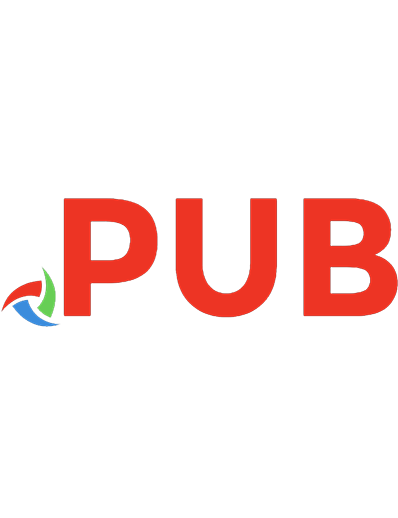How To Get To The Top Of Google in 2020: The Plain English Guide to SEO
Become one of the 10,000+ business owners and marketers who have used this bestselling no-nonsense SEO book to increase
895 96 5MB
English Pages 236 Year 2020

- Author / Uploaded
- Tuxford
- Andrew; Davies
- Dale; Cameron-Kitchen
- Tim
- Categories
- Computers
- Networking: Internet
Table of contents :
Title Page
Copyright Page
Introduction
Who this book is for and why it exists
What sort of results can you expect?
What being at the top of Google will mean for your business
A free gift before we begin…
How Easy Is It To Rank?
How to Use This Book
The Structure of this Book
This Book is Not Written By an Author
Section 1: The Foundations
Chapter 1: Four free ways to appear on the first page of Google
Method 1: Google Organic Results
Method 2: Featured Snippets
Method 3: Google Local
Method 4: Using Other People’s Websites
Chapter 2: How Google decides where to rank you and your competitors
Ranking Pillar 1: Relevance
How Does Google Measure Relevance?
Myth Buster: Indexing
Ranking Pillar 2: Popularity and Authority
Ranking Pillar 3: Quality
Upgrade 1: Your Website’s Content
Upgrade 2: Errors and Broken Links
Upgrade 3: Mobile Friendliness
Chapter 3: How to find and rank for the most profitable keywords
Step 1. Brainstorm keywords
Step 2. Download keywords from Search Console
Step 3. Use SEMrush to find keywords
Step 4. Check competitor keywords
Step 5. If you’re a location-based business…
Step 6. Find your most profitable keywords
Step 7. Google keywords to check the search results are relevant
Step 8. Now you’ve got your keywords, find your key pages
A final word about keyword research
Chapter 4: Analysing your competition and identifying their strengths and weaknesses
PRO TIP: Checking Ranking
Deconstructing Your Competitors’ Success
Chapter 5: An Introduction to backlinks
Anchor Text
Section 2: Your Website
Chapter 6: Website Optimisation
Chapter 7: Domains and URLs
Key EMD Myths
Differences between TLDs
Hyphens and Separators
Domain Length
Domain Age
Capital Letters
Page URLs
Capital Letters
Chapter 8: How to structure a top-ranking website
Folders and Directories
Use Separate Pages for Each Service
Chapter 9: Sitemaps
Chapter 10: One website or multiple?
Chapter 11: Website usability and performance
Chapter 12: Mobile
Mobile Friendliness
Responsive Websites vs Separate Mobile Websites
Chapter 13: How to write for Google and profit
What Is Good Content?
Spelling. And Grammer.
Duplicate Content
Where a Site Can Be Penalised for Duplicate Content
Headings
Content for eCommerce (or Other Large Websites)
Chapter 14: How To Use Knowledge Bases and FAQs To 10X Your Organic Traffic
How to Plan a Knowledge Base
Chapter 15: How to use your blog to actually make money
Further Resources
Chapter 16: Behind the scenes optimisation
The Fastest Way To Improve Your Ranking: Writing Killer Page Titles
Meta Descriptions
Meta Keywords
Image Optimisation
Schema Markup
Chapter 17: Website speed hacks
Mobile Site Speed
Human Response Times: The 3 Important Limits
Measuring Your Website’s Performance
Chapter 18: Google Search Console
Manual Actions and Reconsideration Requests
Section 3: Promoting Your Website
Chapter 19: Link acquisition basics
Chapter 20: Good links vs bad links
Are you suffering from a link penalty?
Link Metrics
Domain Authority (DA)
Page Authority (PA)
Trust Flow (TF)
Citation Flow (CF)
How to Use These Metrics
Chapter 21: Online directories
Market-Specific Directories vs General Directories
How To Spot a Spammy Directory
Chapter 22: Links from video
Chapter 23: Introduction to content marketing
Chapter 24: How to get featured on the world’s biggest websites through digital PR
Using PR For Free Advertising/Lead Generation
Pitching for TV Coverage
Following Up Journalists and Editors
Chapter 25: 95% of surveys are run by businesses looking for PR
eCommerce Data Outreach Example
Lead Generation Data Outreach
How To Run Your Own Data Outreach Study
Chapter 26: Blogger and influencer outreach
Chapter 27: How to get influencers to promote your business
How to pitch to influencers without feeling awkward
Chapter 28: How to use Inbound PR requests to get featured in top-tier publications… free
How To Do All Of This Without Paying For Journalist Enquiry Services
Chapter 29: Using social media to boost your SEO
Optimise Your Social Profiles
How to Get Your Business Showing Up as an Expanded Listing on Google
Optimising Your Facebook Page
How to Get Lots of Reviews on Facebook and Google
Section 4: Designing and Implementing your SEO Strategy
Chapter 30: How to plan an SEO strategy
Step 1: Website Review
Step 2: Keyword Targeting
Step 3: Competitor Analysis
Step 4: Website Optimisation
Step 5: Phase 1 Links
Step 6: Phase 2 Links
Step 7: Measure Progress and Refocus
Chapter 31: How to measure your progress
How to measure how many keywords your website is ranking for
How to measure and track the most relevant keywords
Chapter 32: Outsourcing vs DIY
Chapter 33: Further help and advice









